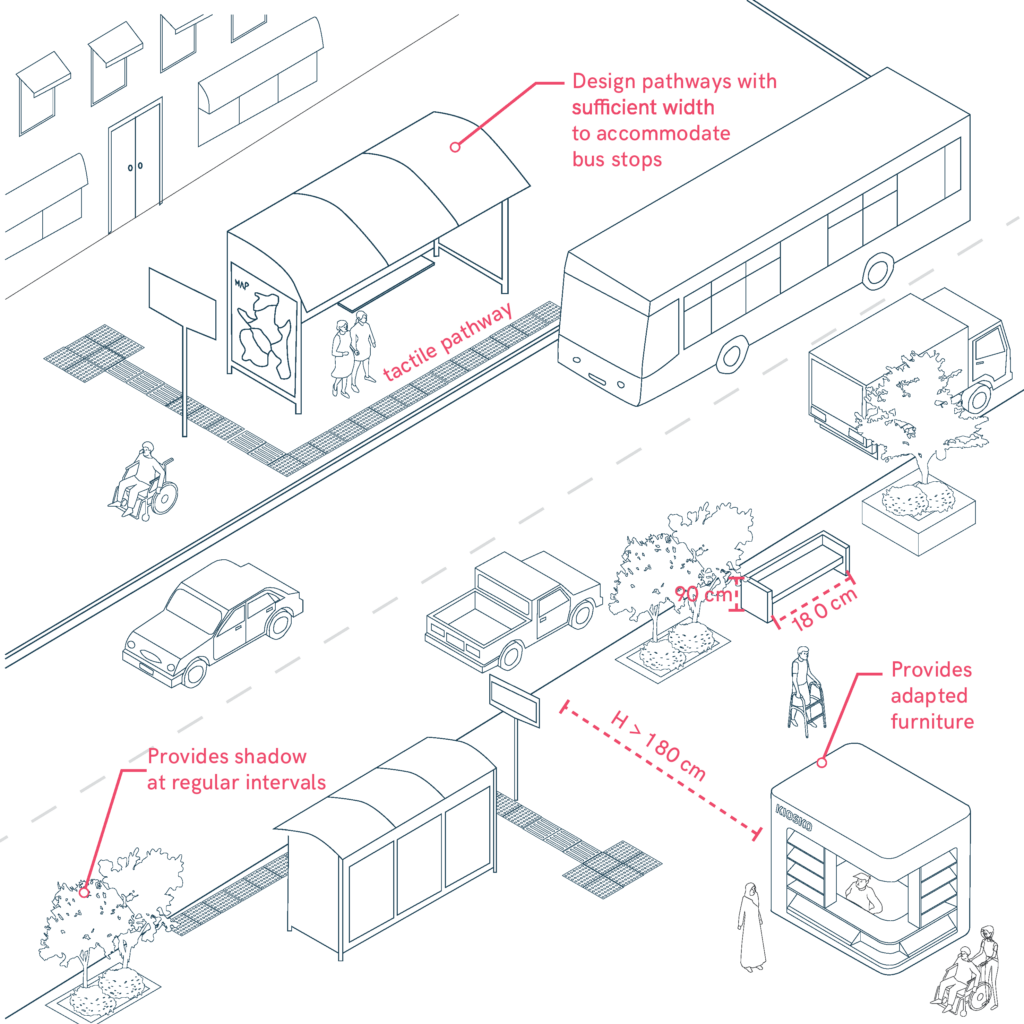Urban Furniture and Amenities
The placement of urban furniture such as benches, waste bins, and bus stops can significantly impact the accessibility and comfort of pedestrian pathways. These elements must be integrated thoughtfully to avoid obstruction while enhancing the functionality of public spaces.

- Design pathways with sufficient width (minimum 1.80 meters) to accommodate walking, wheelchair use, and strollers.
- Include tactile, auditory, and visual information along the route to support individuals with sensory impairments.
- Mark pedestrian routes clearly to guide users toward key destinations and important areas.
- Place urban furniture along the outer edges of pedestrian pathways to avoid obstruction, leaving central areas clear for movement.
- Ensure seating and other furniture are accessible, considering the needs of people with disabilities.
- Ensure grates and covers are flush with surrounding pavements and have openings small enough (1.6 cm diameter).
- Ensure visible surfaces of grates are non-slip in both dry and wet conditions.
- Ensure grates near pedestrian crossings are installed carefully to meet safety requirements.
- Carers
- Children
- Cognitive
- Cognitive abilities
- Decolonial perspective
- Digital
- Digital barrier
- Enviroment
- Environmental
- Gender and generations
- Gender perspective
- Hearing impairment
- Low-education
- Low-income
- Older people
- Other
- Physical abilities and features
- Sensory and Physical
- Socioeconomic
- Visual impairment